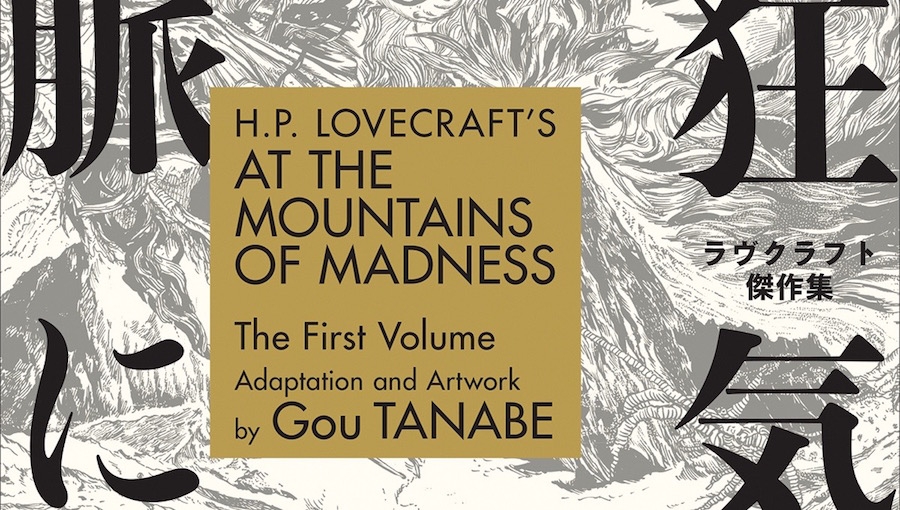First published in 2016-2017 by Kadokawa Corporation, H. P. Lovecraft’s long-form story, At the Mountains of Madness, will release this month by Dark Horse. Known for adapting such literary works by Maxim Gorky and Anton Chekhov, artist Gou Tanabe is back to adapt his next expedition into H. P. Lovecraft’s cosmic horror world. Tanabe’s first Lovecraft adaptation was the 1921 short story, “The Outsider,” published in 2014 and the Eisner-nominated The Hound and Other Stories.
H. P. Lovecraft’s At the Mountains of Madness follows the account of Miskatonic University profession William Dyer as he relates the strange events of a prior expedition to Antarctica that occurred in the early 1930s. The expedition group had traveled to Antarctica in hopes of discovering proof that, at one time, the icy continent had a tropical climate. After finding unusual rocks, the Professor Lake takes a team further towards the South Pole by plane. He and his party find prehistoric evidence that is nothing of this world. When Dyer loses contact with Lake, he and a small group of men go looking for Lake and his party. Dyer finds a horrific scene of death and is puzzled by the mystery of the specimens in the closing pages of the first volume.
The pacing of some of Lovecraft’s stories are occasionally hampered by too much detail and not enough action. Tanabe’s adaptation maintains the flavor of scientific details, but not to the point of stifling the flow of storytelling. Tanabe has gotten to know Lovecraft well, knowing what narrative beats to explore and include in order to deliver a brisk and entertaining story without losing the spirit of Lovecraft’s cosmic horror elements and tone.
An admirer of Gustave Doré’s dramatic illustrations, Lovecraft probably would have been thrilled to have his story brought to life with Tanabe’s artistic style. His artistic style is in a similar vein and his diligent use of textures goes far to convey the desolate Antarctic landscape and lends very well to the cosmic horror, such as the specimens and particularly the fata morgana mirage of the black stone city. Tanabe makes good use of page space and panel layouts, especially conveying that sense of vastness with full-page and two-page panel spreads. The black-and-white images complement the setting of the 1930s story.
Zack Davisson and Carl Gustav Horn, translator and editor respectively, further bring Lovecraft’s words alive through Tanabe’s adaptation. Letterer Steve Dutro rounds out the creative team. His lettering is clean and easy to read in the speech and narrative balloons; however, in instances where text is layered on top of Tanabe’s images/textures, the text becomes a bit difficult to read – honestly, this reviewer’s only complaint.
Tanabe’s adaptations of Lovecraft’s stories are a good entry point for new readers looking to read a manga that remains faithful to the source material. Readers familiar with Lovecraft will likely enjoy Tanabe’s interpretation, particularly the visuals, which are truly stunning. Volume 1 drops this month and according to the review page at Dark Horse, the volume 2 follow-up is available for pre-order. While there, check out Tanabe’s The Hound and Other Stories.
Creative Team: Gou Tanabe (adaptation/artwork); Zack Davisson (translator); Steve Dutro (lettering/touch-up); and Carl Gustav Horn (editor)
Publisher: Dark Horse
Click here to purchase.

